I have a series of lines which roughly (but not exactly) intersect at some point.
I need to find the point which minimises the distance between each line in the centre. I have been trying to follow this methodology:
Nearest point to intersecting lines in 2D
When I create my script in Python to perform this function I get the incorrect answer:
Here is my code, I was wondering if anyone could suggest what I am doing wrong? Or an easier way of going about this. Each line is defined by two points x1 and x2.
def directionalv(x1,x2):
point1=np.array(x1) #point1 and point2 define my line
point2=np.array(x2)
ortho= np.array([[0,-1],[1,0]]) #see wikipedia article
subtract=point2-point1
length=np.linalg.norm(subtract)
fraction = np.divide(subtract,length)
n1=ortho.dot(fraction)
num1=n1.dot(n1.transpose())
num = num1*(point1)
denom=n1.dot(n1.transpose())
return [num,denom]
n1l1=directionalv(x1,x2)
n1l2=directionalv(x3,x4)
n1l3=directionalv(x5,x6)
n1l4=directionalv(x7,x8)
n1l5=directionalv(x9,x10)
numerall=n1l1[0]+n1l2[0]+n1l3[0]+n1l4[0]+n1l5[0] #sum of (n.n^t)pi from wikipedia article
denomall=n1l1[1]+n1l2[1]+n1l3[1]+n1l4[1]+n1l5[1] #sum of n.n^t
point=(numerall/denomall)
My points are as follows Line1 consists of points x1= [615, 396] and x2 = [616, 880]
Line 2, x3 = [799, 449] x4= [449, 799]
Line 3, x5 = [396, 637] x6 = [880, 636]
Line 4, x7 = [618, 396] x8 = [618, 880]
Line 5, x9 = [483, 456] x10 = [777, 875]
Any help would be really appreciated!
Thank you for your time.

